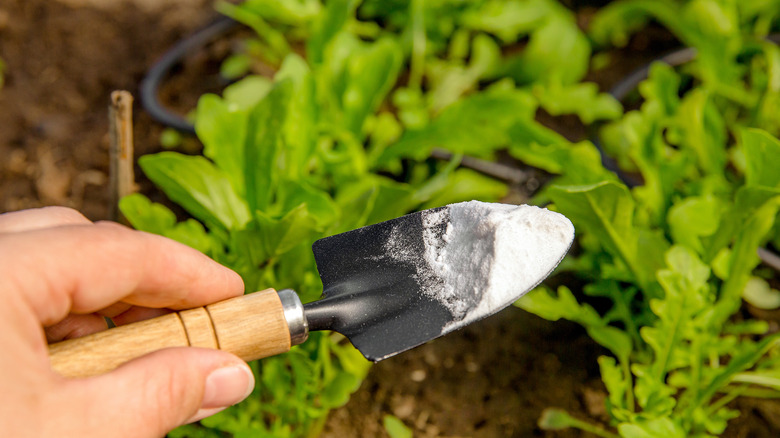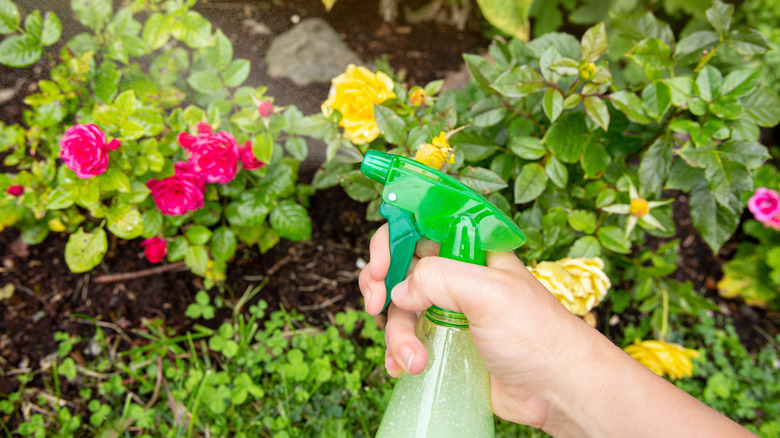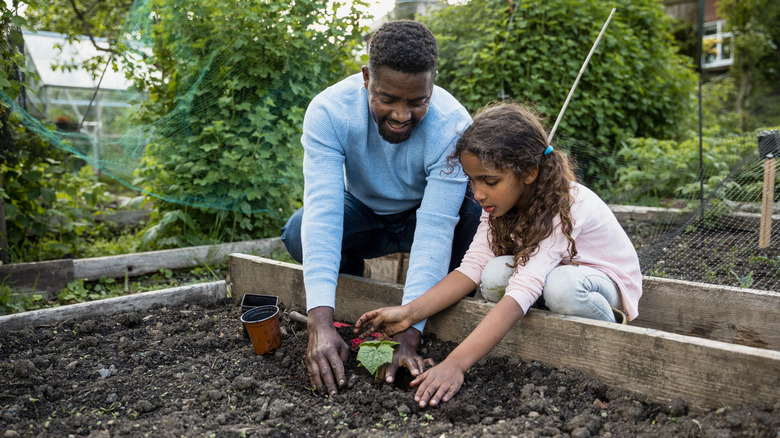What Every Gardener Should Know Before Using Baking Soda On Plants
Before you rush to fill your garden with colorful fruits, vegetables, and flowers, you first need to make sure your soil has the right environment for your plants. Doing a test of your soil's pH can give you insight into its health and compatibility with what you want to plant. You can purchase an at-home test kit from your local garden center or you can send your soil to a lab for analysis. If you'd like to get a quick overview of your soil's acidity, you can follow Growfully's instructions to test your soil without a kit using distilled water and vinegar. Ideal soil pH levels range between 5.5 and 7.5. Depending on your test results, you may need to take measures to adjust your soil's acidity.
Baking soda has been used by gardeners to reduce soil acidity by increasing pH. It can also be used to prevent fungal diseases like powdery mildew, botrytis, and anthracnose. But before you go sprinkling baking soda around your garden, it's important to know how to use it correctly, as too much can create issues for your plants.
How to use baking soda on your plants
If a test determines that your soil's pH is too acidic, you make a baking soda spray for your soil by mixing 1 tablespoon of baking soda per gallon of water you're planning to use. Once you've added your baking soda to the water, give it a good mix to make sure it's fully dissolved. Spray this over the area of your garden you're planning to plant in. This should raise the pH of your soil within a few days and can be repeated every couple of months.
If you want to prevent fungal diseases on the plants themselves, you can make a baking soda foliar spray instead. A baking soda spray can be used as a preventative measure to make the environment on your plant's leaves and stems inhospitable for fungi to germinate and thrive. Make the foliar spray by dissolving 4 teaspoons of baking soda with 2 ½ tablespoons of horticultural oil in a gallon of water. Spray your mixture on the leaves and stems, making sure you reach all areas. You can use the spray weekly but keep an eye out for yellowing or wilting of the leaves as this is a sign of leaf scorch or dehydration. While baking soda can be effective for your garden, it's important to stick to the recommended doses and instructions to avoid the harmful effects it may have if used in excess.
Precautions for using baking soda on your plants
Plan ahead before you start your baking soda treatments. Water your soil and plants the day before to make sure they are well prepared. Avoid spraying your plants when they'll be fully exposed to the sun, instead, try applying the spray to a small section first in the late afternoon to see how they'll react. If your soil pH does not improve or a fungal issue continues to spread, consider switching to a stronger fungicide or a different soil treatment, as using a higher concentration of baking soda can harm your plants. Too much baking soda can cause excess salts in the soil. This can throw off your soil's mineral and pH balance, stunting your plant's growth, scorching their leaves, and making them wilt from dehydration.
When mixing your baking soda foliar spray, stick to horticultural oil or insecticidal soap and avoid detergents or dish soap. Horticultural oil and insecticidal soap will help your mixture stick to your plant's leaves without dehydrating them. Alternatively, neem oil and milk are also effective as a foliar treatment to prevent fungal diseases. Other simple measures you can take to avoid fungal diseases are properly spacing your plants to ensure adequate air circulation, avoiding overwatering, and using a slow-release fertilizer.


